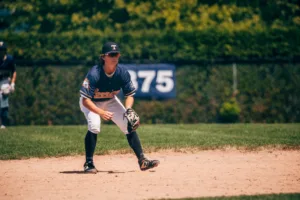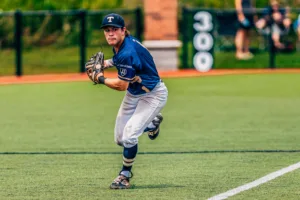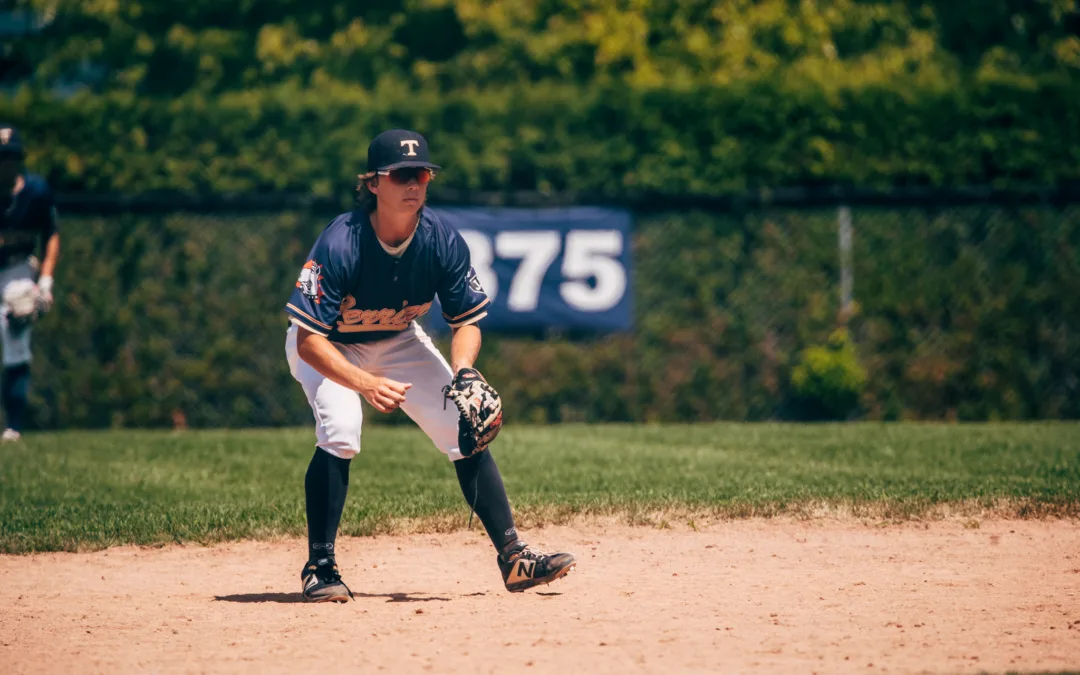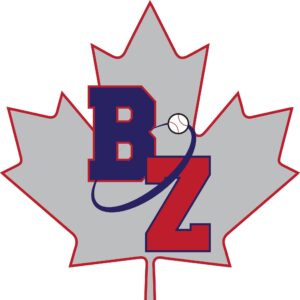Original Author: Rick Johnston – Co-Founder, The Baseball Zone
Co-Author: Luke Tevlin – Former D1 Infielder and current TBZ/Terriers Coach
Edited By: Jayson Eljawhary
The art of fielding a ground ball successfully takes years and years of fundamental practice of learning how to read balls off the bat, creating angles, learning the pursuit speed toward balls, using the feet to take the glove to the ball, manipulating the glove to ensure it is squared up to the ball, and creating rhythm and flow amongst numerous other fundamental factors. When training your infielders in the development of fielding ground balls, don’t ever neglect the numerous classifications of types of ground balls, as well as the different kinds of “hops”, or bounces. First, the three kinds of hops:
Long Hop: This is the easiest and most standard kind of hop as an infielder, also referred to as a “Sunday hop”. This is a ball that has bounced a fair distance from the infielder and is either at the peak of its arc on the way to the next bounce or it is already moving down.
Short Hop: This is a ball that bounces right before an infielder catches the ball. The ball should not have time to get as high as the fielder’s mid-shin before being caught or “picked” by the infielder. These are considered the second easiest kind of hop.
In-Between Hop: These are balls that bounce too far away from the fielder to be considered a short hop but are still on the way up. These are the least favourable kinds of ground balls and should be avoided if possible.
Now here are the eight essential ground ball classifications:
1. Right at the Infielder:
The routine play. This play must be made as often as possible as it is the most common and most controllable footwork that infielders will execute. Often, infielders can become complacent when a routine ground ball is hit at them because it is “easy”. They often will take for granted this will be an easy play, and then OOPS, the clank happens. Become a master at the routine play. Build confidence and self-esteem that will lead into making a show-stopping play later and will have your teammates appreciating your hard work now.
2. Left and Right:
Many times, infielders will work only to their strong side (the glove side). Think of taking ground balls to both sides like a switch hitter. If the switch hitter takes 100 swings from the right side, he must do the same from the left. The same applies to infielders. If an infielder is taking 25 ground balls to the left, make sure they take 25 to the right on top of their routine ground balls.
3. Flats:
These are ground balls that are at the extent of the infielder’s range towards their forehand (glove) side. To make sure the infielder has enough time to get to the ball, they must fight to get some depth, then re-direct their body toward the direction of the throw destination. This means that they are taking an angle towards the outfield, making for a deeper route to the ball, then turning the hips (or in some extreme cases, spinning) to redirect the throw to first base. At 3B, the flat would be to the left, out in the 5/6 hole; at SS, to the left, out toward and possibly behind second base; at 2b, out to the left, in the 3/4 hole. Each one of these “flats” will require the infielder to “right the ship” to make a throw to first base.
4. Deep:
This is considered deep to their back hand. Very difficult balls to get to and even more difficult to get off a throw with velocity or accuracy. Infielders need to see how much range they have; how much arm strength and ball carry they can get on their throws. They also need to decide when making these long throws if they need to use the ground and throw a long hop to first base. Understanding your own capabilities in terms of speed, arm strength, and strength in your legs will help an infielder figure out how many steps they need, to make sure the throw is on time, with enough pace, and is accurate. Planting hard on your right foot to change directions is both very difficult, but very necessary to redirect your momentum for the ensuing throw.
5. High Hopper:
These are balls that are hit hard straight down into the ground, often referred to as the “plate pounder”. When this ground ball happens and the infielder reads the first hop down sharply off the bat, they must move aggressively towards the ball, charging hard. Sitting back on this type of ground ball will often lead to fielding balls at incorrect hops and place massive amounts of pressure on the infielder to get rid of the ball too quickly. Charging the ball right away will make for a much easier bounce as well as a throw that can be calmer and more accurate. Remember, first hop high, GO and GET it!
6.Slow Roller:
Like the high hopper, the infielder must move aggressively toward the ball and decide on a bare hand, one hand (glove), or two-handed pick up. If using the bare hand, the infielder must avoid slapping or picking the ball but instead, almost using the arm and hand as a pendulum to scoop the ball up off the ground. The two-handed pick up is only when the infielder is sure that they are going to be able to secure the ball easily. It is faster, as the transfer of the ball from glove to hand happens almost simultaneously, but it is also more inconsistent as there is less adjustability with your body when you catch any baseball with two hands. The one-handed option is for balls that are hit at difficult hops but are moving too fast to be scooped with a barehand.
7. Line Drive Hops:
This is the one hopper that is hit with authority towards the infielder, and there is little time to react. The infielder needs to try and get the eyes below the flight of the ball to accurately judge the bounce and be able to see the ball better. Often on these one hop LD’s, the infielder will need to get the body turned slightly sideways to set their position as early as possible. Moreover, it will help them decide if they will field the ball on a long hop or a short hop pick as there is not much time to react and adjust our body.
8.The Dreaded In-Betweener:
This kind of ground ball happens almost exclusively when there is a misread on the ground ball resulting in a very difficult “in-between hop”. This is a very tough one to work on, as the infielder is actively trying to avoid this hop. Even though this is considered the avoidance hop, it’s going to happen, so work on the recovery movement as well as the ability to keep your body in front to knock the ball down in a worst case-scenario.
If you think you have another type of ground ball, I’d love for you to share it here. Meanwhile, make sure you are practicing fielding each of these 8 types of ground balls!


